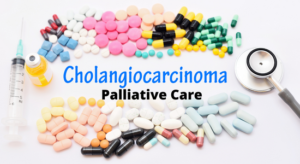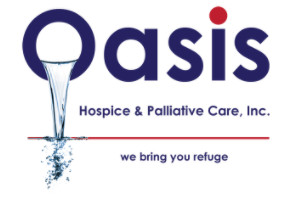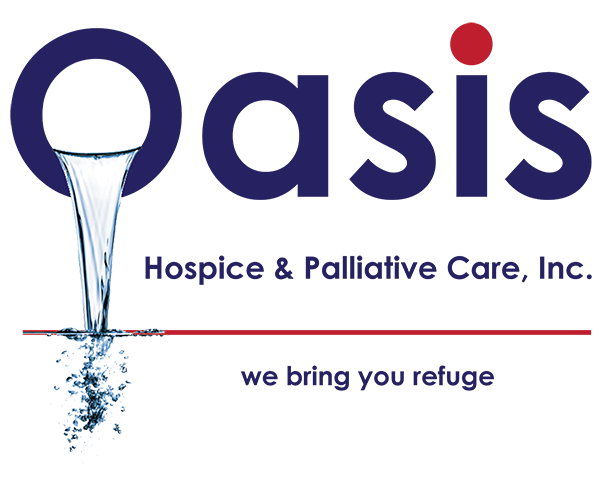Cholangiocarcinoma is a cancer that develops in the bile ducts, which transport the digesting fluid bile. Bile ducts are tubes that run from your liver to your gallbladder and small intestine. How to do cholangiocarcinoma palliative care?

Cholangiocarcinoma, also known as bile duct cancer, is more common in persons over 50, but it can strike anyone at any age. Cholangiocarcinoma is classified into four categories based on where cancer develops in the bile ducts:
- Intrahepatic cholangiocarcinoma is a kind of liver cancer that develops in the portions of the bile ducts within the liver.
- The bile ducts just outside the liver are affected by hilar cholangiocarcinoma. Perihilar cholangiocarcinoma is another name for this form of cholangiocarcinoma.
- The section of the bile duct closest to the small intestine is affected by distal cholangiocarcinoma. Extrahepatic cholangiocarcinoma is another name for this kind.
- Cholangiocarcinoma is frequently discovered after it has progressed, making effective therapy challenging.
Bile duct and Gallbladder
Symptoms
The following are some of the signs and symptoms of cholangiocarcinoma:
- Your skin and the whites of your eyes are turning yellow (jaundice)
- Skin is really itchy
- Stools in white color
- Fatigue
- Right side abdominal ache, just below the ribs
- Weight loss without effort
- Fever
- Sweats at night
- Urine that is dark in color
When Should You See a Doctor?
If you have chronic exhaustion, abdominal pain, jaundice, or other bothersome signs and symptoms, see your doctor. He or she may recommend you to a digestive disease expert (gastroenterologist). Oasis Hospice provides the best home health care for cancer patients.
Causes
Cholangiocarcinoma develops when the DNA of cells in the bile ducts changes. The DNA of a cell includes the instructions that tell it what to do. The modifications cause the cells to grow uncontrollably, resulting in a mass of cells (tumor) that can infiltrate and kill healthy body tissue. What causes the alterations that lead to cholangiocarcinoma is unknown.
Factors That Are At Risk
The following factors may raise your risk of cholangiocarcinoma:
- Sclerosing cholangitis is a kind of primary cholangitis. The bile ducts become hardened and scarred as a result of this condition.
- Chronic hepatitis is a condition that affects the liver The risk of cholangiocarcinoma is increased by scarring of the liver induced by a history of chronic liver illness.
- Bile duct issues are evident from birth. Cholangiocarcinoma is more common in people who were born with a choledochal cyst, which creates dilated and uneven bile ducts.
- A parasitic infection of the liver. Cholangiocarcinoma is linked to liver fluke infection in Southeast Asia, which can be contracted by eating raw or undercooked seafood.
- Getting older. Adults over the age of 50 are more likely to develop cholangiocarcinoma.
- Smoking. Smoking has been linked to a higher risk of cholangiocarcinoma.
- Diabetes. Cholangiocarcinoma is more likely in people who have type 1 or 2 diabetes.
- Several hereditary diseases. Conditions that enhance the risk of cholangiocarcinoma are caused by DNA alterations passed down from parents to children. Cystic fibrosis and Lynch syndrome are two examples of these diseases.
Prevention
You can lower your risk of cholangiocarcinoma by:
- Quit smoking: A higher risk of cholangiocarcinoma has been associated to smoking. Stop smoking if you do. If you’ve attempted to quit before but haven’t been successful, talk to your doctor about quitting tactics.
- Reduce your chances of developing liver disease: A higher incidence of cholangiocarcinoma is linked to chronic liver illness. Some causes of liver disease are unavoidable, but others can be avoided. Do everything you can to protect your liver.
- If you prefer to drink, for example, drink in moderation to lower your risk of liver inflammation (cirrhosis). That is up to one drink per day for women and up to two drinks per day for men for healthy people. Maintain a healthy body mass index (BMI). Follow the safety recommendations while working with chemicals.
Diagnosis
If your doctor suspects cholangiocarcinoma, one or more of the following tests may be ordered:
- Liver function tests are performed. Blood tests to assess your liver function can provide hints to your doctor as to what’s causing your symptoms.
- Test for tumor markers. The level of carbohydrate antigen (CA) 19-9 in your blood may provide further information to your doctor regarding your diagnosis. CA 19-9 is a protein that bile duct carcinoma cells overproduce.
- However, a high amount of CA 19-9 in your blood does not necessarily indicate that you have bile duct cancer. Other bile duct illnesses, such as bile duct inflammation and occlusion, can produce this effect.
- A tiny camera is used to inspect your bile duct. A thin, flexible tube with a tiny camera is sent down your neck and into your digestive tract to your small intestine during endoscopic retrograde cholangiopancreatography (ERCP). The camera is utilized to look at the connection between your bile ducts and your small intestine. This method may also be used to infuse dye into the bile ducts to make them appear more clearly in imaging studies.
- Imaging tests are performed. Your doctor can use imaging tests to look at your internal organs and seek signs of cholangiocarcinoma. Ultrasound, computerized tomography (CT) scans, and magnetic resonance imaging (MRI) combined with magnetic resonance cholangiopancreatography are all used to identify bile duct cancer (MRCP). MRCP is becoming a more popular noninvasive option than ERCP. It provides 3D images without requiring the use of a dye to enhance the visuals.
- A process for removing a tissue sample for testing. A biopsy is a technique in which a tiny sample of tissue is removed and examined under a microscope.
- If the suspicious area is close to where the bile duct meets the small intestine, your doctor may do an ERCP to collect a biopsy sample. If the suspicious spot is located within or near the liver, your doctor may take a tissue sample by passing a long needle through your skin to the affected area (fine-needle aspiration). To guide the needle to the precise place, he or she may employ an imaging test, such as endoscopic ultrasound or CT scan.
- The manner in which your doctor obtains a biopsy sample may have an impact on the therapy options available to you subsequently. You will be ineligible for liver transplantation if your bile duct carcinoma is biopsied by fine-needle aspiration. Do not be afraid to inquire about your doctor’s experience with cholangiocarcinoma diagnosis. Get a second opinion if you have any doubts.
If your doctor confirms a cholangiocarcinoma diagnosis, he or she will try to assess cancer’s stage. This frequently necessitates additional imaging studies. The stage of your cancer influences your prognosis and treatment options.
Oasis Hospice will assist you in managing hospice care for cancer in Chicago. Read another post about brain tumor hospice. Ask your doctor about scheduling a consultation with Oasis Hospice, or for more information, you can call (708) 564-4838.

